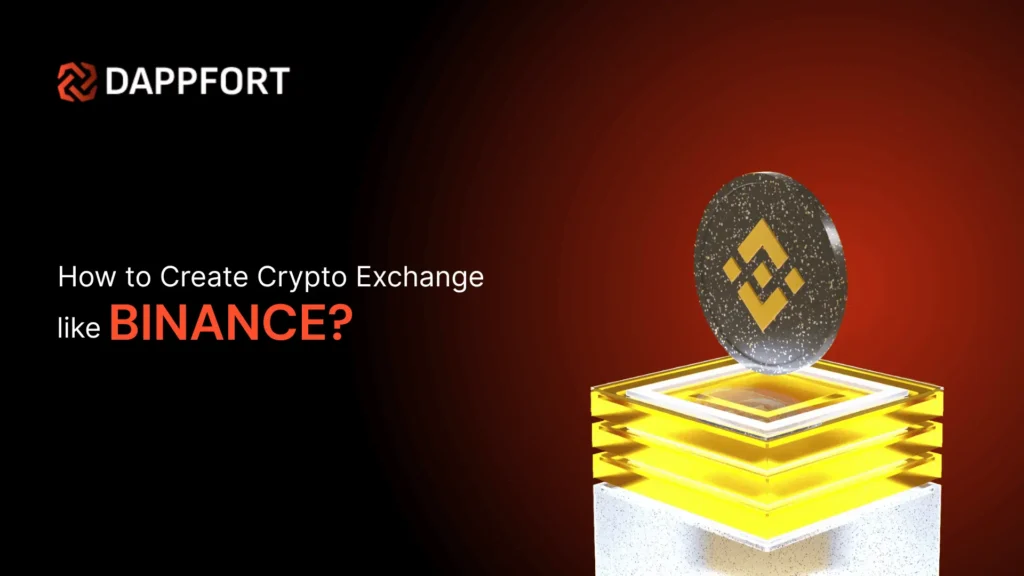How to Start Crypto Exchange like Binance?

Entrepreneurs are taking advantage of the chance to enter the market and quickly establish their presence in the constantly changing cryptocurrency landscape. The crypto exchange development of a Binance like exchange is one appealing strategy. In this blog, we will examine the step by step process of developing a exchange similar to Binance. Understanding the potential of a Binance s essential to unlock the success in the emerging world of digital finance, whether you’re a budding crypto entrepreneur or an established business looking to enter this space this blog will give you a detailed walk-through in the development process.
Develop a Crypto Exchange Like Binance
Step 1: Define the Exchange Type and Business Model
Step 2: Build a Scalable System Architecture
Step 3: Set Up Trade Engine
Step 4: Integrate Multi-Currency Wallet
Step 5: Implement Secure Identity and KYC Systems
Step 6: Craft the Frontend Experience for All Users
Step 7: Add Liquidity Management and Market Integration
Step 8: Strengthen Platform Security End-to-End
Step 9: Test, Launch, and Maintain Your Platform
Step 1: Define the Exchange Type and Business Model
Before any technical work starts, the project scope needs to be crystal clear. Will you be launching a centralized exchange (CEX) like Binance, or are you considering a decentralized alternative (DEX)? Binance started with a CEX model, offering speed, liquidity, and user control, and later expanded into the DEX space with Binance Chain. Choosing the right architecture defines how the platform will be built, secured, and maintained.
Along with that, finalize the business model. Will the platform charge maker-taker fees, list new tokens for a fee, offer margin trading, staking, or even futures contracts? All of this affects how your backend architecture is designed and what kind of third-party integrations you’ll need. This step is about outlining the market strategy and how it directly shapes the tech stack.
Step 2: Build a Scalable System Architecture
Crypto exchanges are data-heavy platforms. Every second, they need to handle new user registrations, fetch price feeds, match orders, and manage transactions — often across multiple chains and currencies. This means the core architecture must be built to scale horizontally with growing user traffic and trading volume.
The backend should be microservice-based to isolate workloads — for example, separating the matching engine, wallet management, user authentication, and analytics modules. A well-structured architecture allows for faster maintenance, quicker updates, and better fault tolerance. It also helps to use container orchestration tools like Kubernetes for automated scaling and resource management.
Step 3: Set Up Trade Engine
The matching engine is the brain of any centralized exchange. It receives orders from buyers and sellers and matches them based on price and time priority. To create a Binance-level exchange, this engine must be built to support high-frequency trading with extremely low latency. That means using a high-performance language like Rust, C++, or Go, and ensuring the architecture can process thousands of orders per second.
In parallel, smart order routing must be developed to enable features like limit orders, market orders, stop-loss, and OCO (one cancels the other) orders. It’s also important to build load balancing and disaster recovery mechanisms into the system to prevent any downtime or trading lags, even during peak market activity.
Step 4: Integrate Multi-Currency Wallet System
Handling digital assets is one of the most sensitive aspects of a crypto exchange. You’ll need to build or integrate a secure multi-currency wallet infrastructure that supports both hot and cold wallets. Hot wallets manage daily transactions and need to be tightly secured with multi-sig mechanisms, while cold wallets store the bulk of user assets offline to reduce hacking risks.
Support for major cryptocurrencies like Bitcoin, Ethereum, Solana, BNB, and stablecoins is a given. However, to be competitive, the system should also support ERC-20, BEP-20, and other token standards. This ensures faster onboarding of new coins and tokens without restructuring the backend. Additional features like internal ledger systems and automatic reconciliation help maintain system transparency.
Step 5: Implement Secure Identity and KYC Systems
A Binance-like platform must operate under strict regulatory oversight. That means integrating identity verification systems at both frontend and backend levels. KYC verification needs to be automated with AI/ML-based document verification tools and APIs from third-party providers like Sumsub, Jumio, or Onfido.
Apart from KYC, AML (Anti-Money Laundering) tracking mechanisms should be in place to flag suspicious transactions or behaviors. Real-time monitoring, IP flagging, withdrawal limits, and regional restrictions based on compliance rules are essential. These layers are not just checkboxes — they’re built into the backend systems to prevent fraud and ensure trustworthiness.
Step 6: Craft the Frontend Experience for All Users
Frontend UI/UX is what users interact with daily. Binance offers a sleek, responsive, and intuitive experience across web and mobile. Your platform needs to replicate this clarity with a responsive design that includes real-time charts, order history, watchlists, balance summaries, and trade terminals.
The tech stack here can use frameworks like React, Vue.js, or Flutter for cross-platform compatibility. Beyond just traders, design separate dashboards for admins, KYC verifiers, liquidity managers, and technical support teams. Everyone needs a purpose-built interface that simplifies their job while keeping the system secure and connected.
Step 7: Add Liquidity Management and Market Integration
A new exchange without liquidity will struggle to attract users. Binance became successful not just due to its trading engine but because of its deep order books and tight spreads. For a new platform, liquidity can be bootstrapped via market maker bots, internal trading accounts, or third-party liquidity providers.
You can also integrate with global liquidity pools using APIs or connect with other exchanges through aggregated trading platforms. The key is to create a smooth trading experience even in the early stages, minimizing slippage and order delay. Integrating liquidity management tools in the backend will also allow your team to adjust spreads, control pair activity, and manage risk more effectively.
Step 8: Strengthen Platform Security End-to-End
Cybersecurity is a non-negotiable pillar. Exchanges like Binance spend millions on safeguarding user funds, and you’ll need a multilayered approach too. Every entry point, from login to withdrawals, must be hardened with protections like multi-factor authentication, biometric login, device-based session verification, and email OTPs.
In the backend, use encrypted databases, key vaults for wallet seeds, and rate limiting for all API endpoints. Perform periodic penetration testing and use services like Cloudflare to protect against DDoS attacks. A good security protocol is one that assumes threats will come and proactively blocks them at every level of the infrastructure.
Step 9: Test, Launch, and Maintain Your Platform
Once everything is developed, intensive QA is required across multiple environments — development, staging, and production. Simulate high traffic, API abuse, withdrawal attempts, and system failures to ensure stability under stress. Both manual and automated testing tools are critical here.
For launch, a soft rollout with selected traders and market makers helps fine-tune the system before going live publicly. Post-launch, your dev team must remain agile, addressing bug reports, scaling infrastructure, and patching security vulnerabilities. Regular upgrades, token listings, and community engagement drive platform adoption over time.
End Thoughts
Creating a crypto exchange like Binance isn’t easy. You need strong technical skills, strong security, and a smooth trading experience for users. Every step of the technical process from how trades are matched to how wallets are secured—has to be done right.
That’s where Dappfort can help. If you’re planning to launch your own exchange, we have a ready-made Binance Clone that’s fast, secure, and built to grow. With our support, you can launch your platform quickly and with confidence. Connect with our experts and launch your crypto exchange in a matter of time and build your crypto business empire.
